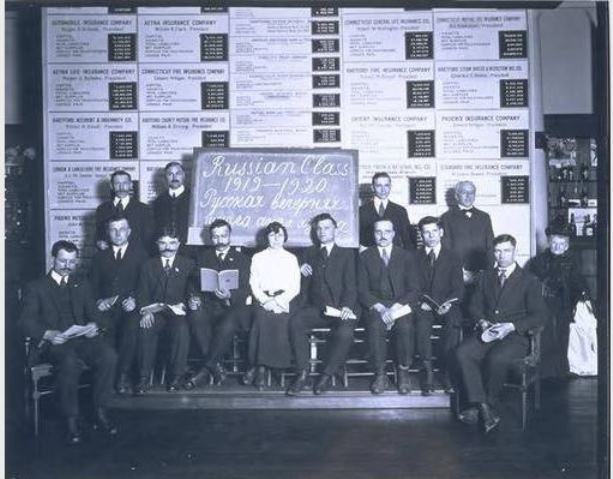Immigration plays such a vital role in the story of Connecticut’s evolution and in the formation of its identity, it becomes impossible to accurately assess and quantify all of its far-reaching consequences. Noticeable changes to language and in the ethnic, racial, cultural, and economic diversity of the state’s population are often the most obvious signs of change, but the story is significantly more complex than that. The varying nature of immigration over the centuries manifested itself in changes to our economy, industries, laws, politics, food, literature, educational standards, arts, and a variety of other aspects we often take for granted. Additionally, as much as immigration helped shape the Connecticut we experience today, the relationship is not one-sided, and Connecticut has also helped shaped immigration.
In the years following the American Revolution (brought on by a clash between English and French settlers decades before), Connecticut’s navigable rivers, abundant supplies of water power and other natural resources, and proximity to the ocean and major metropolitan areas drew waves of immigrants from all over the world. By the middle of the 19th century, Connecticut had roughly 38,000 immigrants (making up approximately 10 percent of the state’s population). Most of these immigrants came from northern and western Europe.
A population explosion in southern and eastern Europe in the late 19th century brought more immigrants to America, with approximately 20,000 arriving in Connecticut every year (a large percentage of them coming from Poland, Italy, and the Slavic states). While American-born residents made up 75 percent of Connecticut’s population in 1870, that figure dropped to only 35 percent by the First World War. Struggles to adapt to changing demographics challenged the state to rethink how Connecticut provided education, jobs, training, social services, transportation, housing, legal protection, equal rights, and a political voice to all of its residents.
The 20th century again brought changing attitudes toward various populations (thanks, in part, to two world wars, the Great Depression, conflicts on the Asian continent, the Cold War, and the maturation of the global economy). It also brought shifts in demographics that saw, among other things, a greater influx of new residents from Latin America. All of these changes weave a complex narrative within the story of Connecticut’s history, while simultaneously providing new and productive entry points from which to foster dialogue. Over the next month, Connecticut Humanities will explore the stories of challenges and of triumphs that immigration has brought to our state, as well as ponder some of the complexities and ambiguities that often arise from shifts in its cultural landscape.








